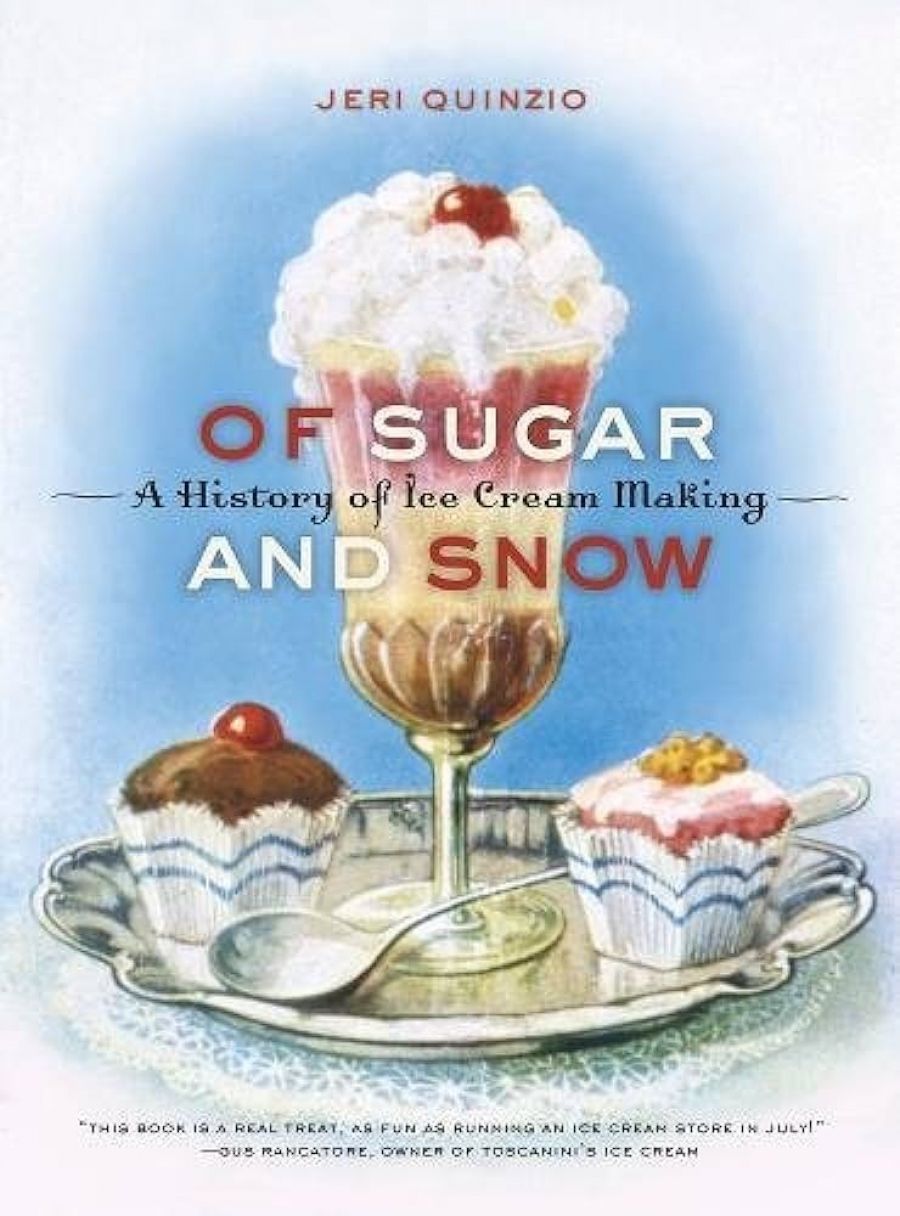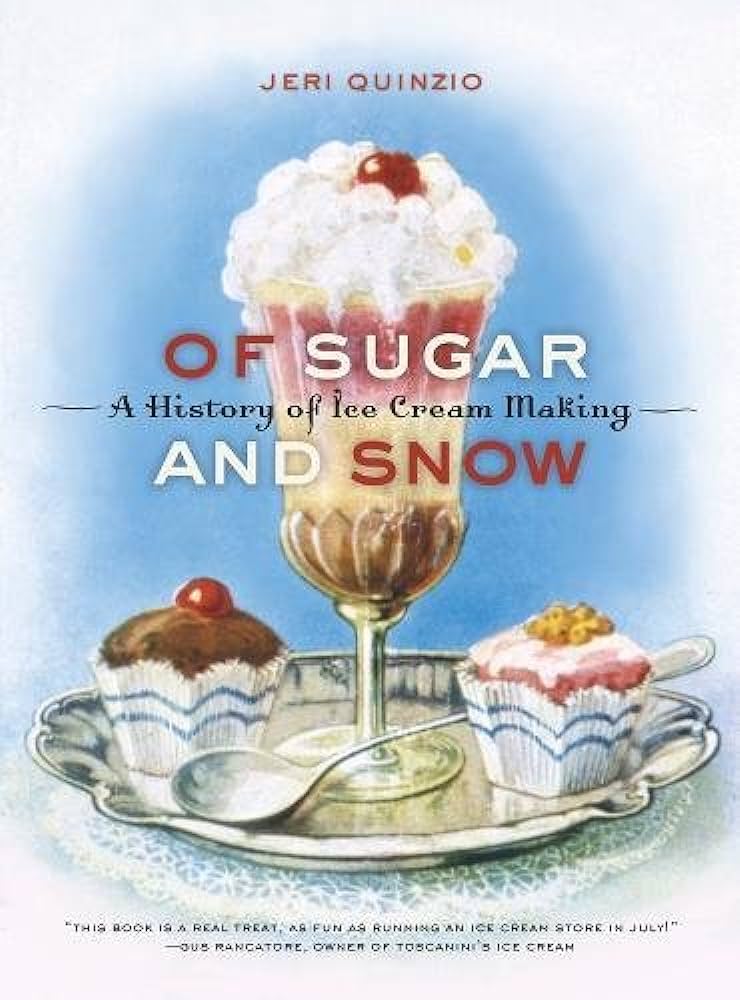
- Free Article: No
- Contents Category: Food
- Review Article: Yes
- Article Title: Emperors of ice cream
- Online Only: No
- Custom Highlight Text:
A remarkable ice cream made in 1991 included two thousand eggs, ninety litres of cream and fifty-five litres of milk. No one but Phillip Searle, Australia’s emperor of ice cream, would have set out to make Ball and Chain, a giant, medieval, spiked weapon which melted in the mouth. The spikes themselves were thirty-centimetre silver-leaf-tipped cones of vanilla ice cream and raspberry sorbet, and these were broken from the enormous ball, which had been sculpted around a heavy iron frame. This included long handles so that the servers, naked but smeared with clay, might carry the weapon through the centre of a rectangle of some 180 diners towards the performance of Music for Ball and Chain, composed by Tony Buck and commissioned by Searle. The musical instruments were indeed a ball and chain.
- Book 1 Title: Of Sugar and Snow
- Book 1 Subtitle: The History of ice cream making
- Book 1 Biblio: University of California Press, $43.85 hb, 286 pp
- Book 1 Cover Small (400 x 600):

- Book 1 Cover (800 x 1200):

Searle has made many spectacular ice creams during his career as artist and chef. His Chequerboard is made up of alternate squares of star anise ice cream and pineapple sorbet, with a liquorice spacer between all the squares and a frame of vanilla ice cream. Once, for a Sydney food symposium, he made a giant slice of this ice cream, so large it served more than 100 diners. Miniaturisation is not in his creative vocabulary.
Why does Searle choose ice cream and sorbet as his materials? In part because they are marvellously malleable before being completely frozen, and he is essentially making edible sculptures. In part perhaps because there is an element of terror in making something which is frozen and might melt too soon, and he likes to run scared. He is dependent on machinery and electricity which sometimes let him down, but unlike many of the conglomerates who make billions of litres of commercial ice cream, he uses no emulsifiers, vegetable gums or gelatin. He succeeds in his pursuit of culinary excellence and artistic perfection at the same time. He is making a product which at its first appearance in the seventeenth century was the exclusive delight of the aristocracy and which is now the ubiquitous treat of hoi polloi.
Searle is turning the tables on the Paddle Pop, the Splice, the Drumstick and the tubs of ice cream for the home freezer, and returning ice cream to its original exclusivity, sometimes, as with Ball and Chain, producing an edible work of performance art, a form of opera gastronomica, which would have been as extravagantly at home on the banquet table of the Sun King as any of the ices and pièces montées that have been recorded.
Central to the story of frozen desserts is ice. In Elizabeth David’s wonderful Harvest of the Cold Months: The Social History of Ice and Ices (1994), there is a fascinating chapter devoted to the history of ice-making and sherbets in Persia, to reports of early travellers to Isfahan and Shiraz, and photographs of extraordinary ziggurat buildings, centuries-old icehouses (the domestic use of ice in Persia dates back to the fifth century bce). Spain, invaded by the Moors, has long had a tradition of flavoured ices and ice creams, and the Spanish ruled Naples in the eighteenth century, when cinnamon, violets, pomegranates, fennel seeds, jasmine syrup, candied citron, apricots and so many more scented flavours were used in ices and ice creams.
Quinzio’s book often uses David’s as a resource, but it concentrates much more on the history of ice cream in America and the shift from the ice trade to manufactured ice as well as the evolution of the ice cream churn (in 1981, Time magazine called ice cream America’s ‘drug of choice’). By 1920, forty million tons of ice were produced artificially and only fifteen million tons of natural ice were harvested. It is interesting to go to the comprehensive entry for ice cream in The Oxford Companion to Food (1999), where one reads that in the twentieth century ice cream was generally thought of as an American invention ‘to such a point as to reinforce the failure of antique dealers, and even of some museums, to identify their ice cream moulds for what they are’.
Of Sugar and Snow reads like an earnest PhD thesis and sent me scurrying back to Elizabeth David, the better writer and more lively researcher. David’s greatest gift was surely not to have introduced postwar England to colourful vegetables which grew above the ground, but to have written so well. At least by trudging through Of Sugar and Snow the enchantment of Harvest of the Cold Months was rediscovered, an oblique reward for a reviewer.


Comments powered by CComment